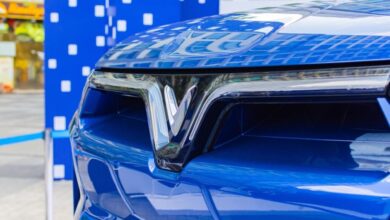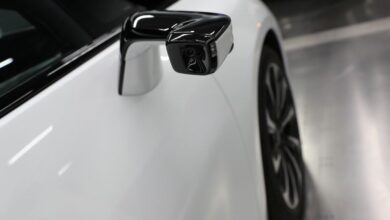Letter: The harsh realities of EV ownership – InForum

I am not trying to bust Kevin Brauer’s chops on his letter to the editor ”
The sorry state of electric vehicle fast charging in the F-M area
,” but rather expand on the idea that electric vehicle technology, particularly with regard to charging stations is daunting. There is the rah-rah myth about EV’s and then there is the reality—which is undeniable when one looks at the numbers.
For the record, I went to the Fargo Moorhead Metropolitan Council of Governments open house on electric vehicles readiness.
There were a bunch of charts explaining how EV technology was, in my words, “now,” “happening,” “cheap,” “safe,” and “user friendly,” the sense of the open house was rah-rah and mythical.
I didn’t come to sharp-shoot the representatives of the new EV technology, but I found problems. I think my concerns were significant and sometimes the representatives in the room were unaware of the readily available information on EVs, not accurately reflected in their presentation.
For example, Chart 2 claimed that Toyota was scheduled to increase their production of EVs to 70% of their total output. I pointed out to the representative that according to the Wall Street Journal, Toyota was cutting their current production of EVs by 39% and Ford was cutting their EV production by 84%
Chart 3 claimed that EV ownership is cheaper than for conventional vehicles. I pointed out to that representative that tire wear on EV’s is 20% greater than traditional vehicles because of increased weight. In addition, resale value of EVs dropped 31.7% this past year, an indication of the increasing costs of maintenance in older models. For example, replacement batteries at 100,000 miles run $20,000. All one has to do is go to the dealer and ask to see the scheduled maintenance recommendations from the shop to compare myth with reality.
Chart 4 claimed that fires in EVs are not any more dangerous than conventional vehicles. I pointed out that according to the WSJ, firefighters are finding fires caused by electric vehicles last longer and are more difficult to put out. The current policy in Houston is to just let the car burn. Some departments are developing special grappling hooks to pull cars out of garages in an attempt to save the attached house.
Finally, Chart 5 dealt with EV charging stations. I pointed out that although there are 24 such stations in Fargo, the time needed to charge varies depending how many cars are plugged in next to each other. So, if there are two cars, the “30-minute” full charge increases to about 45 minutes. If there are six stations together, the full charge increases to 90 minutes. In other words, the “grid” ain’t up to it as the charging stations are currently configured. At this chart the representative also admitted that there was no reliable access to charging stations heading west to Montana beyond Dickinson.
Home charging stations cannot be set up with the “fast charge” configuration because of residential current requirements as well as insurance costs for such systems. Level 3 charging station costs start at about $20,000 to install–if you can get the permit.
Currently, it takes 30 minutes to charge a typical electric car (60kWh battery) at a 150kW rapid charging station from empty-to-full. If you use a 7kW public charger, it will take 8 hours and around 3 hours using a 22 kW ChargePoint.
All the above is to explain why the economies of scale for EV charging infrastructure is daunting. A review of some numbers might help.
Currently, there are about 84 gas stations, with at least 12 pumps per station for a total of about 1,008 individual pumps to service the approximately 131,000 citizens of Fargo. It takes about 15 minutes to fill a tank and these pumps are generally available 24 hours a day. And yet, we still often wait in lines to get our gas. Hmmm.
I would point out that a lot of citizens in Fargo have to park on the street because they don’t have access to a garage, and so a dedicated plug in at home is not an option. Adding a 150kW charging station here or there in Fargo isn’t going to get the EV revolution into the region of reliability that we require here in the great, white, cold, windy, open, long distance, North.
Building a subsidized $20,000 charging station for one Chevy Bolt from Park Rapids isn’t a priority.
Back to the myth. I am a pilot and travel extensively in Europe and South America. My experience is to expect delays and have a Plan B. For example, Spain has shiny plastic brochure touting their bullet train and one is encouraged to buy a Euro Pass for their eco-friendly rapid train travel. The only problem is that train only runs when there is a politician or special event entourage to show off for. Publicity supports the myth. I don’t mind because I still view long distance travel as an adventure. EVs are the “wave of the future” but driving a Chevy Bolt in North Dakota is a lesson in reality. Embrace the adventure if you dare.
Merle D. Anderson lives in Fargo.



